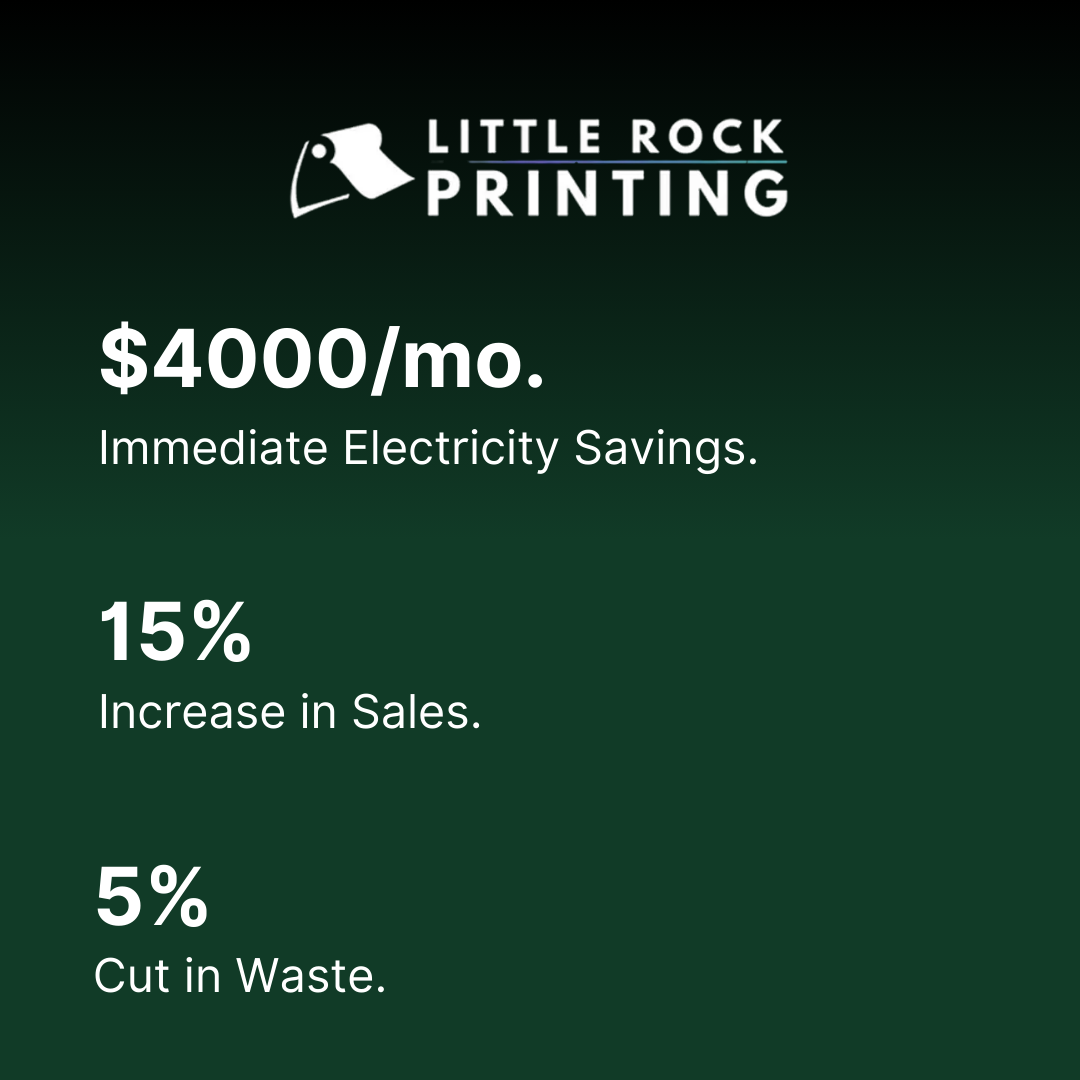Production Printers
Reliability, Quality, Speed, and ROI for High-Volume Print Environments.
Streamline Your Most Complex Print Jobs with Unmatched Quality
Whether you're producing marketing collateral, custom packaging, wide-format signage, or high-end art prints, one thing is clear: your print equipment has a direct impact on your bottom line.
Whether you have a high print volume, manage marketing materials in-house or operate a print shop, upgrading to a production printer can unlock real returns.
Explore a Whole New World of Printing Possibilities
Ricoh's production range is made to work with a massive variety of stock. Imagine all the coated, coloured, textured, and synthetic possibilities ready and waiting to amaze your customers. There's an equipment for every need—from entry-level light production printers to high-performance machines built for speed, colour, and finishing.

Enhance Your Creations and Maintain Exceptional Colour Consistency
From deep blacks to vivid colour saturation—and even gold and silver toners—Ricoh’s 5th Colour Digital Station unlocks applications that turn heads. Your prints won’t just meet expectations—they’ll exceed them.

Experience Significant Energy Bill Savings & Reduced Waste
Upgrading your production equipment can lead to significant energy bill savings. Older printers often require venting and humidifiers, increasing electricity costs. Ricoh presses eliminate venting needs and use less power, resulting in immediate savings.
Automatic front-to-back registration, stock profiles that control paper temperature, and auto sheet clearing (to un-jam your press without you hardly lifting a finger) are just some of the advances that make sure you keep waste levels low with less reprints.

Finish Fast and with Style
Improve turnaround times and increase your print capacity. Ricoh’s line of finishers make it easy to print more types of documents, quickly. Create professional saddle-stitched booklets with minimal effort using the booklet maker, folder and trimmers. Fold media in multiple styles to give customers more options. Collate, bind, punch, trim, staple, stack and add or close rings with minimal manual intervention.

Let’s look at a real-world example:
A Canadian print shop, Little Rock Printing, switched to two Ricoh Pro C9500 digital presses and saw:
-
Higher quality and consistent output
-
Immediate ROI by cutting costs up to $4,000 per month in electricity: older printers often need venting and humidifiers, driving up electricity costs. Ricoh presses eliminate those extras and run more efficiently, cutting your power bill from day one.
-
Increased production while reducing paper waste due to fewer errors and higher accuracy
-
Achieved a 20% spread: increased sales by 15% and cut waste by 5%
-
Faster turnaround times

How Do I Know If a Production Printer Is Right for My Business?
You’re so focused on getting work out the door, you don’t have time to ask yourself the big questions: How has the market changed? Am I keeping up or falling behind? How do I stack up against the competition?
Often, the answers to these and other questions come down to the technology you’re using. After all, you’re only as productive, efficient and competitive as your press(es). And if you haven’t upgraded in the last few years, you may be missing out on new business, or new opportunities with existing clients.
It might be time to upgrade if:
-
You're outsourcing jobs you’d rather keep in-house
-
You’re spending hours troubleshooting colour or quality issues
-
You’re limited by media types or finishing capabilities
-
Your current equipment is expensive to maintain or frequently down
What you will likely see from an upgrade:
-
Significant time and cost savings - High-capacity feeders let you run thousands of prints without stopping to reload print trays, and a wide range of finishing options allow you to automate tasks.
-
Bring your printing in-house
-
Improved sustainability
-
Large volumes of high-quality prints without overloading your device

Printing Costs Out of Control? We’ve Got the Blueprint to Fix it.
Unlock the strategies for smarter printing on our Complete Guide to Controlling Printing Costs in The Office.
What Does a Production Printer Cost?
As with just about any time the question of cost comes up, our answer ultimately boils down to “it depends.” The price of a production printer can vary wildly depending on how you configure it.
Expect to spend at least $25,000 for an entry-level production printer and well over $250,000 for a premium model decked out with all the bells and whistles.
This significant upfront price tag is just one cost to consider, however. Production printers are sophisticated machines and require specialized service technicians if and when they require maintenance.
Since they produce such a large volume of printing output, they also tend to chew through a considerable number of toner cartridges and finishing consumables such as staples and bindings. Be sure to consider both of these factors when calculating your real cost of ownership.
Ultimately, what a production printer is going to cost you depends on how you intend to use it. The price to purchase a device to produce ultra-high-resolution images is going to be different than if your goal is to produce 500,000 bound pamphlets or booklets annually.
Are There Any Downsides to Using a Production Printer?
Now that we have pumped up all the benefits of using a production printer, you are probably wondering if there are downsides to such a high-tech piece of equipment. Production printers do indeed have a few notable disadvantages you need to consider.
- Take up a lot of space
- Quite expensive
- Large power requirements
Production printers take up a lot of space
Production printers are big pieces of equipment. Basic configurations are often eight or nine feet long, while a larger unit can be as long as 26 feet. Many of these devices also require a bubble of unobstructed space around them to access the various modules for service and to refill consumables.
Office space has a cost. If you are trying to decide whether you should bring your printing inhouse, it’s worth considering the floorspace sacrificed for the device.
Production printers are quite expensive
As we discussed in the previous section on cost, technology like this does not come cheaply. A production printer could bring tremendous value to your organization, but they are also a significant investment.
Production printers have significant power requirements
A standard office MFP only requires a 115-volt plug, but a production printer requires much more power. Some units require as many as two 220-volt, 20-20-amp lines to operate.

Questions to Ask Before Buying a Production Printer
Before making the substantial investment that is the purchase of a production printer, there are a few essential questions you need to ask yourself:
Do you need multiple production print product lines?
How much printing do you plan on doing? How many different mediums do you want to print on? How complex are your print jobs (ex. large runs of a single page vs merging dozens of documents into one booklet)?
Are service and support available?
Servicing a production printer requires specialized training. Does your manufacturer or dealer have trained service technicians in your local area? If you live outside of an urban area, what is their estimated response time for a service call in your area?
What media sizes are you printing?
Most production printers are configured to print paper sizes up to A3+ or 13″ x 19″ (329mm x 483mm). However, they can be extended to print sizes up to 366mm x 520mm.
Which brand should you consider?
There are many production printer brands to consider, with both pros and cons to each selection. Be sure that whichever you choose either has a local service team or a trusted local dealership with a service team trained on production equipment.

Trends in Technology: Streamline Workflows, Improve Communication and Enhance Productivity
Learn about the top technologies revolutionizing the way we work.
Are You Thinking of Buying a New Production Printer?
If you made it to the bottom of this page, then you must either have decided you want to go ahead and purchase a production printer for your organization or else you have questions we missed addressing on this page.
Are you in the latter camp and have questions you want to have answered? Either fill out the form on the right of the page or follow this link to request a consultation with one of our production print experts.
Or, if you believe a new production printer could add value to your business? Reach out to find your local showroom and schedule a free demo of the equipment.
Request a Free Consultation
Do you have a few more questions you want help answering before you pull the trigger on a production printer for your team? Or maybe you would like to see them in action first?
We are here to help! All of our consultations are completely free, request one today and we can answer your remaining questions.


